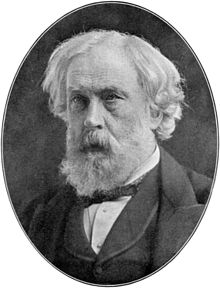Samuel Wilks
| Sir Samuel Wilks, Bt | |
|---|---|
 |
|
| Born | 2 June 1824 |
| Died | 8 November 1911 (aged 87) |
| Nationality | United Kingdom |
| Fields | medicine |
| Alma mater | Guy's Hospital |
Sir Samuel Wilks, 1st Baronet (2 June 1824 – 8 November 1911) was a British physician and biographer.
Samuel Wilks was born on 2 June 1824 in Camberwell, London, the second son of Joseph Barber Wilks, a cashier at the East India House. After attending Aldenham School and University College School he was apprenticed to Richard Prior, a doctor in Newington.
In 1842 he entered Guy's Hospital to study medicine. After graduating MB in 1848 he was hired as a physician to the Surrey Infirmary (1853). In 1856 he returned to Guy's Hospital, first as assistant physician and curator of its Museum (a post he held for nine years), then as physician and lecturer on Medicine (1857). From 1866 to 1870 he was Examiner in the Practice of Medicine at the University of London and from 1868 to 1875 Examiner in Medicine at the Royal College of Surgeons.
Among his major discoveries, Wilks recognised ulcerative colitis in 1859, differentiating it from bacterial dysentery. His work was confirmed later (1931) by Sir Arthur Hirst. Wilks autopsy of a 42-year-old woman who died after several months of diarrhoea and fever demonstrated a transmural ulcerative inflammation of the colon and terminal ileum.
Wilks also firstly described trichorrhexis nodosa (the formation of nodes along the hair shaft), in 1852. The term was proposed in 1876 by Moritz Kaposi (1837–1902), a Hungarian dermatologist. Subsequently, in 1868, he published the characteristic mental symptoms on alcoholic paraplegia (later to be named Korsakoff's syndrome). Wilks described the first case of myasthenia gravis, in 1877 (it was named "bulbar paralysis" in Guy's Hospital Reports 22:7).
...
Wikipedia
